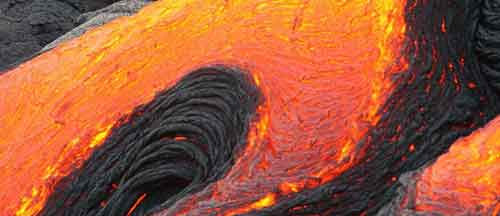
Don't Burn Your Tongue
Share
In prior posts, it was pointed out that coffee trees like good drainage. Volcanic soil is perfect for this and it tends to be found at elevations coffee like, so that’s a perfect match. Volcanic ranges tend to hang around the equator where sunlight is pretty even, and that’s perfect too.
The kind of soil you find there are Andisols. Volcanic ash and cinder with lots of glass created from the heat of being part of a… Volcano. Andisols (black soil) are terrific for growing crops. It holds moisture as well as hold back phosphorus from the coffee plant. The non-crystalline minerals of Andisols love to organic matter which the coffee trees love in return. At the same time that this soil holds water well, the non-organic part lets water drain and you don’t get soggy rotty roots. It’s fluffy and light, lots of aeration, and easy to farm. On slopes, the drainage is even better.
Sometimes in coffee descriptions, you see the term Volcanic Loam. That just means you have the properties of clay, sand, and silt in the mix. Soils will, of course, be different in different growing regions and that’s part of the terroir or taste of the place. An example would be Colombia where Antioquia is a bit older and the department of Caldas a bit newer. Calda having a fresher layer of ash turning to soil. Volcanic soils are similar to sedimentary soil in structure, but chemically vasty superior. The soils are sometimes shallow but can be a few meters deep.
Coffee is also kind to the soil in return. It removes very little nitrogen, phosphorus, and potassium that mineral decomposition keeps up well with toward healthy soil. In practice, that means weeding a few inches above the ground and letting the cuttings decompose in place. Lots of rain and lots of sun around the equator help with decomposition.
Some typical regions where you’ll find volcanic loams are: Central America, Colombia, Ethiopia, Indonesia, and of course Hawaii. So Voila! Volcanic soil as part of the taste of your coffee.
It’s worth pointing out that industrial coffee is a whole different thing. Traditional coffee farming is pretty low tech and close to the earth. Production waste is often composted and returned the soil as needed rather than any kind of synthetic fertilizers used. They're economically inefficient and just not needed in high elevation volcanic soil. So even if you don’t see a certification listed, don’t assume the worst. Just think about where your coffee came from. A Volcano!

